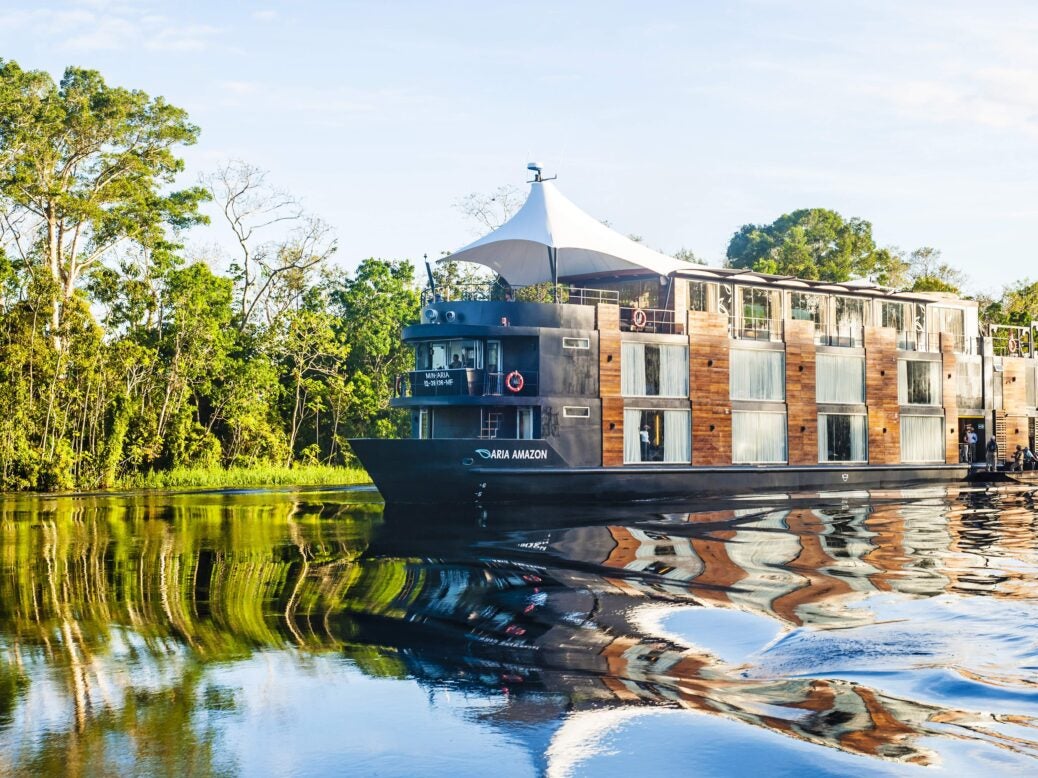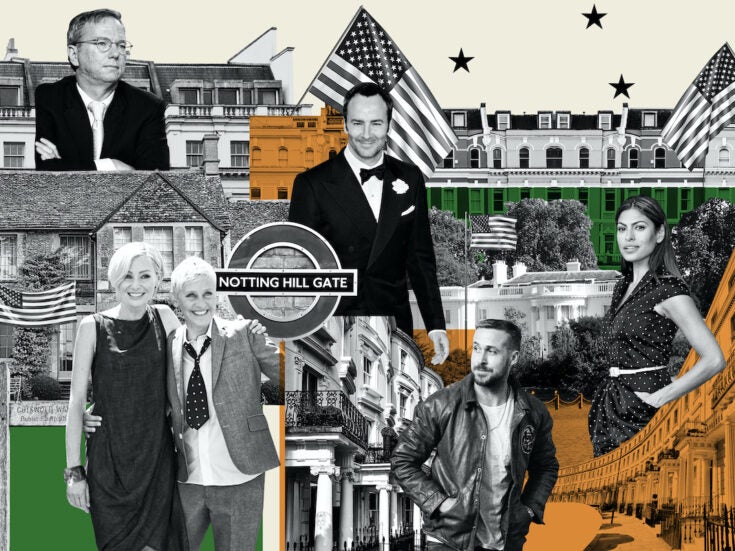
Channel your inner Indiana Jones on a luxurious Peruvian expedition snaking along the world’s most breathtaking river, writes Laura Millar
The small skiff cuts through the silky, caramel-coloured waters of the Amazon River, the sky darkening to black velvet. There is no visibility, apart from the light coming from
the torch held by our native guide, Julio, which occasionally picks out pairs of red dots glowing in the darkness. ‘Caiman,’ he says casually. ‘Let me show you properly.’ He bends over the prow, reaches in, and heaves out a small, scaly creature that writhes as Julio clamps his hands, gently, around its neck and back legs. It’s a baby spectacled caiman; Julio passes it to me to hold. It’s incredibly strong. As it twitches to get out of my grip, I can feel its pulse through its throat, like a particularly vicious kitten.

It’s the end of only my first full day out on the longest river in the world, as part of a cruise that sails from the town of Iquitos, Peru — known as the gateway to the Amazon, a two-hour flight north of the country’s capital, Lima — with a mission responsibly to introduce visitors to the flora and fauna that populate not only its depths, but also the acres of lush, rolling rainforest and jungle through which the river flows. The Amazon is more than 4,000 miles long, and in wet season —December to April — when it rises, some parts can reach more than 30 miles wide. It was first explored, in 1541, by the Spanish soldier Francisco de Orellana, who gave the river its name after reporting being attacked by tribes of female warriors, whom he likened to the Amazons of Greek mythology.

More than 3,000 known species of fish swim in the river and more are constantly discovered. Birdsong is a constant melodic backdrop; already, we’ve spotted cormorants, white-winged swallows, and yellow-rumped caciques. Toucans are rainbow flashes against the grey, misty sky, squirrel monkeys leap gracefully from branch to branch, and a prehistoric-looking green iguana drapes itself over a tree. Binoculars are used to zoom in on tiny saddleback tamarin monkeys, and their cousins, monk sakis. All around us are hundreds of types of trees and foliage, which include 30,000 medicinal plants used by locals, in 50 shades of green, from emerald, to jade, to sage. The ululation of frogs accompanies us as we glide past tall bulrushes and spiky bromeliad trees.
Twice-daily expeditions are undertaken from the luxurious base of the Aria Amazon, a small, exclusive 16-cabin cruiser, which operates like a floating five-star hotel. Each well-equipped cabin has floor-to-ceiling windows, past which the arresting scenery constantly unspools. There’s a small gym and spa area, and a restaurant serving top-class meals developed by executive chef Pedro Miguel Schiaffino, who also has his own restaurant in Lima. Championing Amazon cuisine, his excellent dishes include indigenous giant river snails, catfish, ceviche, and heart of palm, alongside more familiar meals such as roast pork and pasta. The top deck houses a large, comfortable lounge area with a cocktail bar, and even a hot tub outside.

Cruises last for three, four or seven days, and explore a protected part of the river in the Pacaya Samiria National Reserve. After sailing through the night, the Aria will dock some time before dawn. Depending on the weather, there might be an early start, where
the friendly and knowledgeable naturalist guides take out groups of eight to ten passengers each in motorised skiffs for a couple of hours before heading back for breakfast. There might be another expedition mid-morning, then there’s lunch and the chance to relax, before a final outing in the afternoon.

Over the next three days, there are almost too many highlights to count. One morning, I spot a pod of dolphins outside my cabin window, ducking and surfacing playfully. Later that day, we set off along a tributary called the Yanayacu, where — due to its different pH value — the water is black. The surface is carpeted with water lettuce as far as the eye can see. Where the water is visible, it perfectly reflects the trees hanging above it, giving rise to its nickname, the Mirrored Forest. Our guide, Roger, turns up a tributary called Lost Creek, so we can try our hand at a spot of fishing… for piranha.

‘They don’t attack humans or get aggressive unless their eggs are threatened,’ he reassures his party. ‘They get their bad reputation from Hollywood!’ One afternoon, all three skiffs stop in the middle of the water, and our guides start paddling with their hands under the surface. Suddenly there’s a commotion of splashing, and then another guide, Naycer, holds aloft what turns out to be a young anaconda. These snakes eat birds, sloths, and even humans —their mandibles dislocate so they can open their jaws wide enough
to fit in their prey. It’s quite disconcerting to be reminded that some of the river’s inhabitants are pure killing machines.
Unsurprisingly, I prefer the less violent ones. On another outing, Roger points up to a tree, where a brown-throated, three-toed sloth is curled up and doing what it does best: sleeping. Later that day we stop at a village, where children flock round us for gifts of pens and notebooks (guests are encouraged to contribute school materials). One boy has his own pet sloth, and I lift it into my arms. It nuzzles into my chest, its claws automatically trying to hook on to my body, which is part painful, part downright adorable.

Our final day on the water brings even more memories to treasure. We spend the morning trekking through damp, humid rainforest before reaching eight suspended walkways, which reach 30 feet into the treetops. It’s proper Indiana Jones stuff,
made more so depending on how you feel about heights, but offering incredible views down over the jungle. Later, we stop at a beautiful, peaceful lake, where Roger, Julio and Naycer produce, from somewhere, bottles of champagne and fresh fruit juice. It’s an incredible surprise, and we watch the sun go down as we sip on our cocktails, then spend two minutes in silence, listening only to the sound and music of the river and the jungle — an enticing mix of chirping cicadas, rhythmic birdsong, and the occasional cry of an animal. It’s utterly magical. By the time we reach the Aria, she’s illuminated like a beacon in the darkness, a welcoming final destination after such a journey of wonders.







